My
List |
Addition Date
|
Target
|
Mission
|
Instrument
|
Size
|

|
1996-01-29 |
Jupiter
|
Voyager
|
|
2000x536x3 |

|
-
PIA00011:
Cylindrical Projection of Jupiter
Full Resolution:
TIFF
(2.37 MB)
JPEG
(95.49 kB)
|

|
1996-01-29 |
Jupiter
|
Voyager
|
VG Imaging Science Subsystem
|
940x886x3 |
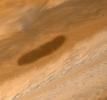
|
-
PIA00015:
-
Large Brown Oval
Full Resolution:
TIFF
(1.991 MB)
JPEG
(54.79 kB)
|

|
1996-01-29 |
Jupiter
|
Voyager
|
|
760x876x3 |

|
-
PIA00017:
-
Cloud Layers Southeast of the Great Red Spot
Full Resolution:
TIFF
(1.838 MB)
JPEG
(53.42 kB)
|

|
1996-01-29 |
Jupiter
|
Voyager
|
Imaging Science Subsystem
|
896x928x3 |

|
-
PIA00018:
-
Exaggerated Color View of the Great Red Spot
Full Resolution:
TIFF
(1.933 MB)
JPEG
(135.2 kB)
|

|
1996-01-29 |
Jupiter
|
Voyager
|
|
908x880x3 |
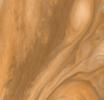
|
-
PIA00019:
-
Cloud Layers East of the Great Red Spot
Full Resolution:
TIFF
(1.709 MB)
JPEG
(63.41 kB)
|

|
1996-01-29 |
Jupiter
|
Voyager
|
|
908x880x3 |
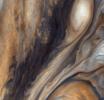
|
-
PIA00020:
-
Exaggerated Color East of the Great Red Spot
Full Resolution:
TIFF
(1.728 MB)
JPEG
(125 kB)
|

|
1996-01-29 |
Jupiter
|
Galileo
|
Solid-State Imaging
|
1600x1250x1 |
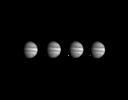
|
-
PIA00139:
-
Comet Shoemaker-Levy 9 Fragment W Impact With Jupiter
Full Resolution:
TIFF
(93.2 kB)
JPEG
(37.14 kB)
|

|
1996-01-29 |
Jupiter
|
Voyager
|
VG ISS - Narrow Angle
|
820x540x3 |
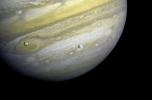
|
-
PIA00144:
-
Jupiter with Satellites Io and Europa
Full Resolution:
TIFF
(821.7 kB)
JPEG
(31.32 kB)
|

|
1996-02-01 |
Jupiter
|
Voyager
|
VG ISS - Narrow Angle
|
895x848x3 |
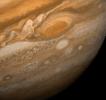
|
-
PIA00014:
-
Jupiter Great Red Spot
Full Resolution:
TIFF
(1.502 MB)
JPEG
(56.12 kB)
|

|
1996-03-13 |
Jupiter
|
Voyager
|
VG ISS - Narrow Angle
|
1000x1000x3 |
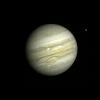
|
-
PIA00235:
-
Jupiter with Satellite Io
Full Resolution:
TIFF
(1.226 MB)
JPEG
(37.26 kB)
|

|
1996-08-01 |
Jupiter
|
Voyager
|
|
2798x2030x3 |
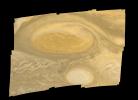
|
-
PIA00022:
-
Jupiter Great Red Spot Mosaic
Full Resolution:
TIFF
(10.08 MB)
JPEG
(324 kB)
|

|
1996-09-26 |
Jupiter
|
Voyager
|
|
1471x1238x3 |
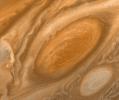
|
-
PIA00065:
-
Jupiter's Great Red Spot Region
Full Resolution:
TIFF
(3.892 MB)
JPEG
(115.8 kB)
|

|
1996-09-26 |
Jupiter
|
Voyager
|
VG ISS - Narrow Angle
|
600x600x3 |
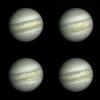
|
-
PIA00454:
-
Early Voyager 1 Images of Jupiter
Full Resolution:
TIFF
(491.5 kB)
JPEG
(21.78 kB)
|

|
1996-09-26 |
Jupiter
|
Voyager
|
Imaging Science Subsystem
|
400x400x3 |
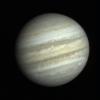
|
-
PIA00029:
-
First Close-up Image of Jupiter from Voyager 1
Full Resolution:
TIFF
(280.8 kB)
JPEG
(10.37 kB)
|

|
1996-09-26 |
Jupiter
|
Voyager
|
VG ISS - Narrow Angle
|
500x500x3 |
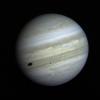
|
-
PIA00455:
-
Jupiter with Io Crossing
Full Resolution:
TIFF
(412 kB)
JPEG
(15.15 kB)
|

|
1996-09-26 |
Jupiter
|
Voyager
|
VG ISS - Narrow Angle
|
846x800x3 |
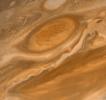
|
-
PIA00456:
-
Jupiter's Great Red Spot and South Equatorial Belt
Full Resolution:
TIFF
(1.41 MB)
JPEG
(48.12 kB)
|

|
1996-09-26 |
Jupiter
|
Voyager
|
VG ISS - Narrow Angle
|
607x496x3 |
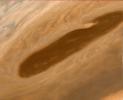
|
-
PIA00458:
-
Jupiter's North Equatorial Belt
Full Resolution:
TIFF
(748.4 kB)
JPEG
(21.62 kB)
|

|
1996-11-13 |
Jupiter
|
Voyager
|
VG ISS - Narrow Angle
|
850x575x3 |
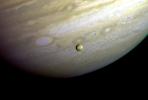
|
-
PIA00371:
-
Jupiter - Io In Front of Jupiter's Turbulent Clouds
Full Resolution:
TIFF
(797.6 kB)
JPEG
(28.95 kB)
|

|
1996-11-13 |
Jupiter
|
Voyager
|
VG ISS - Narrow Angle
|
790x900x3 |

|
-
PIA00372:
-
Jupiter - Region from the Great Red Spot to the South Pole
Full Resolution:
TIFF
(1.269 MB)
JPEG
(60.4 kB)
|

|
1997-01-09 |
Io
|
Voyager
|
VG ISS - Narrow Angle
|
680x500x1 |
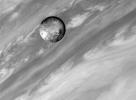
|
-
PIA00378:
-
Io At 5 Million Miles
Full Resolution:
TIFF
(304.1 kB)
JPEG
(34.45 kB)
|

|
1997-01-09 |
Jupiter
|
Voyager
|
VG ISS - Wide Angle
|
800x800x1 |
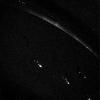
|
-
PIA00204:
-
Lights In The Night
Full Resolution:
TIFF
(153.9 kB)
JPEG
(164.8 kB)
|

|
1997-09-07 |
Jupiter
|
Galileo
|
Solid-State Imaging
|
1400x900x1 |
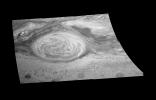
|
-
PIA00488:
-
Great Red Spot Mosaic - Near-infrared Filter
Full Resolution:
TIFF
(506.6 kB)
JPEG
(76.3 kB)
|

|
1997-09-07 |
Jupiter
|
Galileo
|
Solid-State Imaging
|
1024x2048x3 |

|
-
PIA00296:
-
Jupiter's Great Red Spot
Full Resolution:
TIFF
(1.712 MB)
JPEG
(59.1 kB)
|

|
1997-09-07 |
Jupiter
|
Galileo
|
Solid-State Imaging
|
2000x1431x3 |
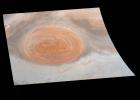
|
-
PIA00708:
-
True Color of Jupiter's Great Red Spot
Full Resolution:
TIFF
(3.943 MB)
JPEG
(108.4 kB)
|

|
1997-09-07 |
Jupiter
|
Galileo
|
Solid-State Imaging
|
2100x1200x3 |
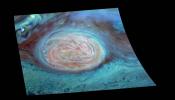
|
-
PIA00489:
-
False Color Mosaic Great Red Spot
Full Resolution:
TIFF
(4.767 MB)
JPEG
(167.5 kB)
|

|
1997-09-07 |
Jupiter
|
Galileo
|
Solid-State Imaging
|
1546x1127x1 |
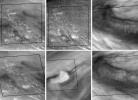
|
-
PIA00490:
-
Features of Jupiter's Great Red Spot
Full Resolution:
TIFF
(716.7 kB)
JPEG
(157.4 kB)
|

|
1997-09-07 |
Jupiter
|
Galileo
|
Solid-State Imaging
|
1400x800x1 |
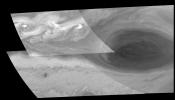
|
-
PIA00719:
-
New Territory West of the Great Red Spot
Full Resolution:
TIFF
(499.6 kB)
JPEG
(62.59 kB)
|

|
1997-09-07 |
Jupiter
|
Galileo
|
Solid-State Imaging
|
2800x1600x1 |
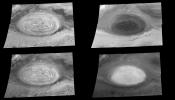
|
-
PIA00721:
-
The Great Red Spot at Four Different Wavelengths
Full Resolution:
TIFF
(2.567 MB)
JPEG
(311.5 kB)
|

|
1997-09-07 |
Jupiter
|
Galileo
|
Solid-State Imaging
|
1000x1400x1 |

|
-
PIA00720:
-
Time Series of the Great Red Spot (near-infrared filter)
Full Resolution:
TIFF
(963.9 kB)
JPEG
(121.6 kB)
|

|
1997-09-07 |
Jupiter
|
Galileo
|
Solid-State Imaging
|
550x750x1 |

|
-
PIA00725:
-
Time changes in Storm Clouds in Jupiter's Atmosphere
Full Resolution:
TIFF
(132.8 kB)
JPEG
(26.9 kB)
|

|
1997-09-07 |
Jupiter
|
Galileo
|
Solid-State Imaging
|
513x701x1 |

|
-
PIA00724:
-
Mesoscale Waves in Jupiter's Atmosphere
Full Resolution:
TIFF
(109.9 kB)
JPEG
(28.37 kB)
|

|
1997-09-08 |
Jupiter
|
Galileo
|
Solid-State Imaging
|
700x800x3 |

|
-
PIA00506:
-
Thunderheads on Jupiter
Full Resolution:
TIFF
(1.007 MB)
JPEG
(63.96 kB)
|

|
1997-09-23 |
Jupiter
|
Galileo
|
Photopolarimeter Subsystem
|
807x700x3 |
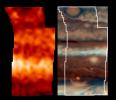
|
-
PIA00730:
-
Jupiter's Temperatures--Broad Latitude
Full Resolution:
TIFF
(1.011 MB)
JPEG
(42.99 kB)
|

|
1997-09-23 |
Jupiter
|
Galileo
|
Solid-State Imaging
|
712x715x3 |
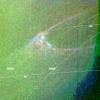
|
-
PIA00603:
-
False Color Aurora
Full Resolution:
TIFF
(1.705 MB)
JPEG
(98.67 kB)
|

|
1997-09-23 |
Jupiter
|
Galileo
|
Solid-State Imaging
|
614x900x1 |

|
-
PIA00605:
-
Visible Jovian Aurora
Full Resolution:
TIFF
(254.8 kB)
JPEG
(106.1 kB)
|

|
1997-09-24 |
Jupiter
|
Galileo
|
Photopolarimeter Subsystem
|
585x376x3 |
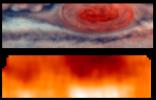
|
-
PIA00731:
-
Jovian Temperatures--Highest Resolution
Full Resolution:
TIFF
(447.1 kB)
JPEG
(17.9 kB)
|

|
1997-09-29 |
Jupiter
|
Galileo
|
Photopolarimeter Subsystem
|
875x605x3 |
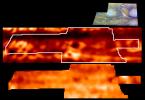
|
-
PIA00732:
-
Jupiter's Temperatures
Full Resolution:
TIFF
(771.1 kB)
JPEG
(49.91 kB)
|

|
1997-11-04 |
Jupiter
|
Galileo
|
Solid-State Imaging
|
313x256x1 |
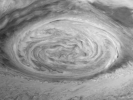
|
-
PIA01083:
-
Dynamics of Jupiter's Great Red Spot in the Near-infrared

Full Resolution:
|

|
1997-11-18 |
Jupiter
|
Galileo
|
Solid-State Imaging
|
1053x1491x3 |

|
-
PIA00600:
-
Family Portrait of Jupiter's Great Red Spot and the Galilean Satellites
Full Resolution:
TIFF
(2.21 MB)
JPEG
(112.7 kB)
|

|
1997-12-04 |
Jupiter
|
Galileo
|
Solid-State Imaging
|
571x1000x3 |

|
-
PIA01093:
-
Turbulent Region Near Jupiter's Great Red Spot
Full Resolution:
TIFF
(2.077 MB)
JPEG
(76.4 kB)
|

|
1997-12-10 |
Jupiter
|
Galileo
|
Solid-State Imaging
|
1700x900x3 |
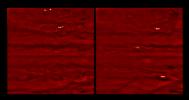
|
-
PIA01096:
-
Jovian Lightning and Moonlit Clouds
Full Resolution:
TIFF
(1.839 MB)
JPEG
(116.3 kB)
|

|
1997-12-10 |
Jupiter
|
Galileo
|
Solid-State Imaging
|
1650x950x3 |
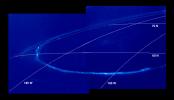
|
-
PIA01097:
-
Night Side Jovian Aurora
Full Resolution:
TIFF
(1.955 MB)
JPEG
(108.6 kB)
|

|
1997-12-18 |
Jupiter
|
Galileo
|
Solid-State Imaging
|
820x1440x3 |

|
-
PIA00522:
-
Jupiter Stratospheric Haze Comparison
Full Resolution:
TIFF
(1.985 MB)
JPEG
(77 kB)
|

|
1997-12-18 |
Jupiter
|
Galileo
|
Solid-State Imaging
|
758x1028x1 |

|
-
PIA00560:
-
Aurora Borealis on Jupiter
Full Resolution:
TIFF
(400.7 kB)
JPEG
(80.66 kB)
|

|
1997-12-18 |
Jupiter
|
Galileo
|
Solid-State Imaging
|
625x685x3 |

|
-
PIA00548:
-
False Color Mosaic of Jupiter's Belt-Zone Boundary
Full Resolution:
TIFF
(1.141 MB)
JPEG
(37.28 kB)
|

|
1997-12-18 |
Jupiter
|
Galileo
|
Solid-State Imaging
|
1000x1700x1 |

|
-
PIA01113:
-
Winds Near Jupiter's Belt-Zone Boundary
Full Resolution:
TIFF
(884.9 kB)
JPEG
(132.9 kB)
|

|
1997-12-18 |
Jupiter
|
Galileo
|
Solid-State Imaging
|
1000x1700x1 |

|
-
PIA01114:
-
Using Methane Absorption to Probe Jupiter's Atmosphere
Full Resolution:
TIFF
(615.8 kB)
JPEG
(76.79 kB)
|

|
1997-12-18 |
Jupiter
|
Galileo
|
Solid-State Imaging
|
1000x1700x1 |

|
-
PIA01115:
-
Jupiter's Belt-Zone Boundary in Near-Infrared and Violet Light
Full Resolution:
TIFF
(748.1 kB)
JPEG
(103.3 kB)
|

|
1997-12-18 |
Jupiter
|
Galileo
|
Solid-State Imaging
|
1000x1000x1 |
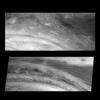
|
-
PIA01119:
-
Changes in Jupiter's Great Red Spot After Four Months
Full Resolution:
TIFF
(474.2 kB)
JPEG
(76.01 kB)
|

|
1997-12-18 |
Jupiter
|
Galileo
|
Solid-State Imaging
|
800x800x3 |
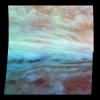
|
-
PIA01116:
-
False Color Mosaic of Jupiter's Belt-Zone Boundary
Full Resolution:
TIFF
(1.401 MB)
JPEG
(56.68 kB)
|

|
1997-12-18 |
Jupiter
|
Galileo
|
Solid-State Imaging
|
800x800x3 |
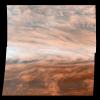
|
-
PIA00574:
-
"True" Color Mosaic of Jupiter's Belt-Zone Boundary
Full Resolution:
TIFF
(1.393 MB)
JPEG
(55.54 kB)
|

|
1997-12-18 |
Jupiter
|
Galileo
|
Solid-State Imaging
|
683x467x3 |
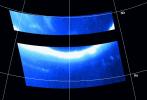
|
-
PIA01117:
-
Jupiter's Northern Auroral Oval
Full Resolution:
TIFF
(114.7 kB)
JPEG
(35.64 kB)
|

|
1997-12-18 |
Jupiter
|
Galileo
|
Solid-State Imaging
|
518x368x3 |
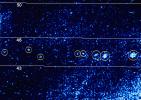
|
-
PIA01118:
-
Jovian Lightning
Full Resolution:
TIFF
(256.1 kB)
JPEG
(48.1 kB)
|

|
1998-03-06 |
Jupiter
|
Galileo
|
Solid-State Imaging
|
1300x1000x3 |
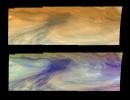
|
-
PIA00602:
-
E4 True and False Color Hot Spot Mosaic
Full Resolution:
TIFF
(2.378 MB)
JPEG
(86.53 kB)
|

|
1998-03-06 |
Jupiter
|
Galileo
|
Solid-State Imaging
|
1300x1200x1 |
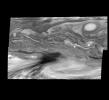
|
-
PIA00604:
-
Jupiter Equatorial Region
Full Resolution:
TIFF
(641.1 kB)
JPEG
(102.2 kB)
|

|
1998-03-06 |
Jupiter
|
Galileo
|
Solid-State Imaging
|
1300x1000x3 |
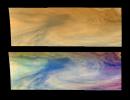
|
-
PIA01080:
-
A Jovian Hotspot in True and False Colors (Time set 1)
Full Resolution:
TIFF
(2.46 MB)
JPEG
(96.96 kB)
|

|
1998-03-06 |
Jupiter
|
Galileo
|
Solid-State Imaging
|
800x900x3 |

|
-
PIA01184:
-
A Jovian Hotspot in True and False Colors (Time set 3)
Full Resolution:
TIFF
(1.399 MB)
JPEG
(51.21 kB)
|

|
1998-03-06 |
Jupiter
|
Galileo
|
Solid-State Imaging
|
1300x1000x1 |
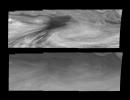
|
-
PIA01185:
-
Jupiter's Equatorial Region in the Near-Infrared and Violet (Time Set 2)
Full Resolution:
TIFF
(518.7 kB)
JPEG
(65.4 kB)
|

|
1998-03-06 |
Jupiter
|
Galileo
|
Solid-State Imaging
|
1300x1000x1 |
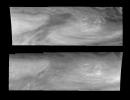
|
-
PIA01186:
-
Jupiter's Equatorial Region in the Two Methane Bands (Time Set 2)
Full Resolution:
TIFF
(760.9 kB)
JPEG
(110.2 kB)
|

|
1998-03-06 |
Jupiter
|
Galileo
|
Solid-State Imaging
|
640x485x1 |
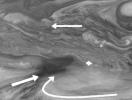
|
-
PIA01187:
-
Wind Patterns in Jupiter's Equatorial Region (Time set 1)
Full Resolution:
TIFF
(228 kB)
JPEG
(31.58 kB)
|

|
1998-03-06 |
Jupiter
|
Galileo
|
Solid-State Imaging
|
552x735x1 |

|
-
PIA01188:
-
Time Sequence of Jupiter's Equatorial Region (Time Sets 2 & 4)
Full Resolution:
TIFF
(251.9 kB)
JPEG
(43.67 kB)
|

|
1998-03-06 |
Jupiter
|
Galileo
|
Solid-State Imaging
|
1600x1200x3 |
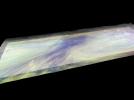
|
-
PIA01189:
-
Three dimensional Visualization of Jupiter's Equatorial Region
Full Resolution:
TIFF
(2.278 MB)
JPEG
(93.69 kB)
|

|
1998-03-06 |
Jupiter
|
Galileo
|
Solid-State Imaging
|
1600x1200x3 |
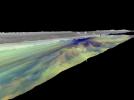
|
-
PIA01190:
-
Three dimensional Visualization of Jupiter's Equatorial Region
Full Resolution:
TIFF
(2.215 MB)
JPEG
(91.22 kB)
|

|
1998-03-06 |
Jupiter
|
Galileo
|
Solid-State Imaging
|
1600x1200x3 |
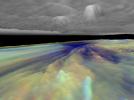
|
-
PIA01191:
-
Three dimensional Visualization of Jupiter's Equatorial Region
Full Resolution:
TIFF
(3.714 MB)
JPEG
(107.4 kB)
|

|
1998-03-06 |
Jupiter
|
Galileo
|
Solid-State Imaging
|
1600x1200x3 |
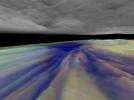
|
-
PIA01192:
-
Three dimensional Visualization of Jupiter's Equatorial Region
Full Resolution:
TIFF
(3.721 MB)
JPEG
(104.2 kB)
|

|
1998-03-06 |
Jupiter
|
Galileo
|
Solid-State Imaging
|
1600x1200x3 |
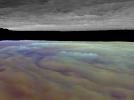
|
-
PIA01193:
-
Three dimensional Visualization of Jupiter's Equatorial Region
Full Resolution:
TIFF
(3.135 MB)
JPEG
(101 kB)
|

|
1998-03-06 |
Jupiter
|
Galileo
|
Solid-State Imaging
|
1600x1200x3 |
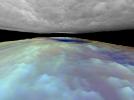
|
-
PIA01194:
-
Three dimensional Visualization of Jupiter's Equatorial Region
Full Resolution:
TIFF
(3.52 MB)
JPEG
(102.9 kB)
|

|
1998-03-06 |
Jupiter
|
Galileo
|
Solid-State Imaging
|
572x480x1 |

|
-
PIA01195:
-
Hazes near Jupiter's Limb (60 degrees North, 315 degrees West)
Full Resolution:
TIFF
(73.35 kB)
JPEG
(11.75 kB)
|

|
1998-03-06 |
Jupiter
|
Galileo
|
Solid-State Imaging
|
572x480x1 |
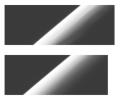
|
-
PIA01196:
-
Haze observations near Jupiter's Limb (60 degrees North, 295 degrees West)
Full Resolution:
TIFF
(71.63 kB)
JPEG
(13.17 kB)
|

|
1998-03-06 |
Jupiter
|
Galileo
|
Solid-State Imaging
|
572x960x1 |

|
-
PIA01197:
-
Haze observations near Jupiter's Limb at 60 degrees North
Full Resolution:
TIFF
(111.9 kB)
JPEG
(21.77 kB)
|

|
1998-03-06 |
Jupiter
|
Galileo
|
Solid-State Imaging
|
1300x1200x1 |
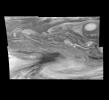
|
-
PIA01198:
-
Jupiter's Equatorial Region in the Near-Infrared (Time Set 1)
Full Resolution:
TIFF
(725.1 kB)
JPEG
(105.3 kB)
|

|
1998-03-06 |
Jupiter
|
Galileo
|
Solid-State Imaging
|
1300x1200x1 |

|
-
PIA01199:
-
Jupiter's Equatorial Region in a Methane Band (Time Set 1)
Full Resolution:
TIFF
(673.1 kB)
JPEG
(85.38 kB)
|

|
1998-03-06 |
Jupiter
|
Galileo
|
Solid-State Imaging
|
1300x600x1 |
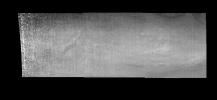
|
-
PIA01200:
-
Jupiter's Equatorial Region in a Methane Band (Time Set 1)
Full Resolution:
TIFF
(410.1 kB)
JPEG
(83.37 kB)
|

|
1998-03-06 |
Jupiter
|
Galileo
|
Solid-State Imaging
|
1300x600x1 |
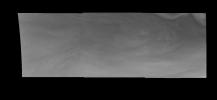
|
-
PIA01201:
-
Jupiter's Equatorial Region in Violet Light (Time Set 1)
Full Resolution:
TIFF
(198.9 kB)
JPEG
(24.01 kB)
|

|
1998-03-06 |
Jupiter
|
Galileo
|
Solid-State Imaging
|
1300x1200x1 |
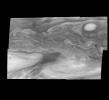
|
-
PIA01202:
-
Jupiter's Equatorial Region at 727 Nanometers (Time Set 2)
Full Resolution:
TIFF
(663.4 kB)
JPEG
(87.93 kB)
|

|
1998-03-06 |
Jupiter
|
Galileo
|
Solid-State Imaging
|
1300x600x1 |
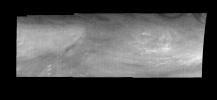
|
-
PIA01203:
-
Jupiter's Equatorial Region at 889 Nanometers (Time Set 2)
Full Resolution:
TIFF
(388 kB)
JPEG
(62.23 kB)
|

|
1998-03-06 |
Jupiter
|
Galileo
|
Solid-State Imaging
|
1300x600x1 |
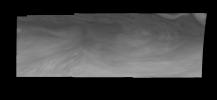
|
-
PIA01204:
-
Jupiter's Equatorial Region in Violet Light (Time Set 2)
Full Resolution:
TIFF
(193.9 kB)
JPEG
(24.83 kB)
|

|
1998-03-06 |
Jupiter
|
Galileo
|
Solid-State Imaging
|
1000x1000x1 |
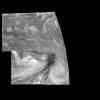
|
-
PIA01205:
-
Jupiter's Equatorial Region in the Near-Infrared (Time Set 3)
Full Resolution:
TIFF
(370.4 kB)
JPEG
(55.99 kB)
|

|
1998-03-06 |
Jupiter
|
Galileo
|
Solid-State Imaging
|
1000x1000x1 |
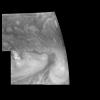
|
-
PIA01206:
-
Jupiter's Equatorial Region in a Methane Band (Time Set 3)
Full Resolution:
TIFF
(351.7 kB)
JPEG
(48.35 kB)
|

|
1998-03-06 |
Jupiter
|
Galileo
|
Solid-State Imaging
|
900x500x1 |
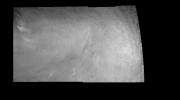
|
-
PIA01207:
-
Jupiter's Equatorial Region in a Methane Band (Time Set 3)
Full Resolution:
TIFF
(198.3 kB)
JPEG
(25.75 kB)
|

|
1998-03-06 |
Jupiter
|
Galileo
|
Solid-State Imaging
|
900x500x1 |
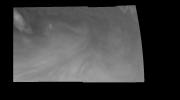
|
-
PIA01208:
-
Jupiter's Equatorial Region in Violet Light (Time Set 3)
Full Resolution:
TIFF
(119.7 kB)
JPEG
(15.3 kB)
|

|
1998-03-06 |
Jupiter
|
Galileo
|
Solid-State Imaging
|
1300x1200x1 |
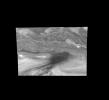
|
-
PIA01209:
-
Jupiter's Equatorial Region in the Near-Infrared (Time Set 4)
Full Resolution:
TIFF
(410.3 kB)
JPEG
(60.85 kB)
|

|
1998-03-06 |
Jupiter
|
Galileo
|
Solid-State Imaging
|
1300x1200x1 |
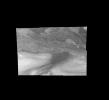
|
-
PIA01210:
-
Jupiter's Equatorial Region in a Methane Band (Time Set 4)
Full Resolution:
TIFF
(406.3 kB)
JPEG
(56 kB)
|

|
1998-03-26 |
Jupiter
|
Galileo
|
Solid-State Imaging
|
600x600x1 |
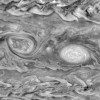
|
-
PIA01230:
-
Motion in Jupiter's Atmospheric Vortices (Near-infrared filters)

Full Resolution:
|

|
1998-03-26 |
Jupiter
|
Galileo
|
Solid-State Imaging
|
640x485x1 |

|
-
PIA01231:
-
Dynamics of Jupiter's Long-lived White Ovals

Full Resolution:
|

|
1998-03-26 |
Jupiter
|
Galileo
|
Near Infrared Mapping Spectrometer
|
233x506x3 |

|
-
PIA00501:
-
NIMS Spectral Maps of Jupiter's Great Red Spot
Full Resolution:
TIFF
(261.8 kB)
JPEG
(14.41 kB)
|

|
1998-03-26 |
Jupiter
|
Galileo
|
Solid-State Imaging
|
970x844x1 |
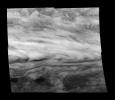
|
-
PIA00843:
-
Jupiter's Belt-Zone Boundary (Methane filter, 732 nm)
Full Resolution:
TIFF
(356.4 kB)
JPEG
(62.08 kB)
|

|
1998-03-26 |
Jupiter
|
Galileo
|
Near Infrared Mapping Spectrometer
|
700x900x1 |

|
-
PIA00848:
-
NIMS Views of a Jovian "Hot Spot"
Full Resolution:
TIFF
(106.1 kB)
JPEG
(19.02 kB)
|

|
1998-03-26 |
Jupiter
|
Galileo
|
Solid-State Imaging
|
800x1100x1 |

|
-
PIA00891:
-
Jupiter's Northern Hemisphere in the Near-Infrared (Time Set 4)
Full Resolution:
TIFF
(471.1 kB)
JPEG
(70.8 kB)
|

|
1998-03-26 |
Jupiter
|
Galileo
|
Solid-State Imaging
|
1400x900x1 |
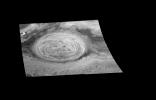
|
-
PIA00830:
-
Mosaic of Jupiter's Great Red Spot (in the near infrared)
Full Resolution:
TIFF
(371.1 kB)
JPEG
(62.12 kB)
|

|
1998-03-26 |
Jupiter
|
Galileo
|
Solid-State Imaging
|
4000x2500x1 |
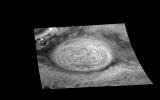
|
-
PIA00832:
-
Mosaic of Jupiter's Great Red Spot (727 nm)
Full Resolution:
TIFF
(1.709 MB)
JPEG
(315.5 kB)
|

|
1998-03-26 |
Jupiter
|
Galileo
|
Solid-State Imaging
|
414x800x1 |
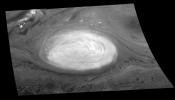
|
-
PIA00833:
-
Mosaic of Jupiter's Great Red Spot (Methane Filter)
Full Resolution:
TIFF
(409.5 kB)
JPEG
(76.8 kB)
|

|
1998-03-26 |
Jupiter
|
Galileo
|
Near Infrared Mapping Spectrometer
|
1300x900x3 |
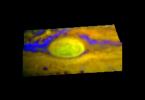
|
-
PIA00838:
-
First Near Infrared Mapping Spectrometer (NIMS) Image of the Great Red Spot
Full Resolution:
TIFF
(1.043 MB)
JPEG
(38.36 kB)
|

|
1998-03-26 |
Jupiter
|
Galileo
|
Near Infrared Mapping Spectrometer
|
900x800x3 |
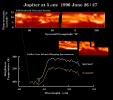
|
-
PIA00842:
-
Observations of Jupiter's thermal emission made by the Infrared Telescope Facility and the Galileo NIMS instrument
Full Resolution:
TIFF
(100.3 kB)
JPEG
(72.46 kB)
|

|
1998-03-26 |
Jupiter
|
Galileo
|
Near Infrared Mapping Spectrometer
|
1000x800x3 |
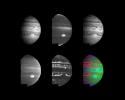
|
-
PIA00582:
-
Jupiter's Multi-level Clouds
Full Resolution:
TIFF
(415.2 kB)
JPEG
(39.65 kB)
|

|
1998-03-26 |
Jupiter
|
Galileo
|
Near Infrared Mapping Spectrometer
|
1000x800x3 |
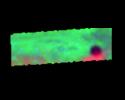
|
-
PIA00847:
-
NIMS Observes Europa's Shadow
Full Resolution:
TIFF
(636.5 kB)
JPEG
(25.2 kB)
|

|
1998-03-26 |
Jupiter
|
Galileo
|
Solid-State Imaging
|
1400x800x3 |
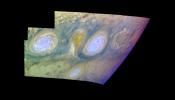
|
-
PIA00857:
-
Jupiter's Long-lived White Ovals in False Color (Time Set 4)
Full Resolution:
TIFF
(1.522 MB)
JPEG
(67.93 kB)
|

|
1998-03-26 |
Jupiter
|
Galileo
|
Solid-State Imaging
|
1400x800x3 |
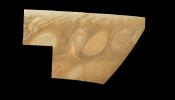
|
-
PIA00858:
-
Jupiter's Long-lived White Ovals in True Color (Time Set 4)
Full Resolution:
TIFF
(1.229 MB)
JPEG
(52.59 kB)
|

|
1998-03-26 |
Jupiter
|
Galileo
|
Solid-State Imaging
|
1700x800x3 |
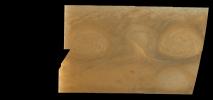
|
-
PIA00859:
-
Jupiter's Long-lived White Ovals in True Color (Time Set 2)
Full Resolution:
TIFF
(1.943 MB)
JPEG
(63.89 kB)
|

|
1998-03-26 |
Jupiter
|
Galileo
|
Solid-State Imaging
|
1700x800x3 |
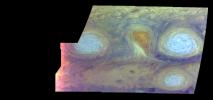
|
-
PIA00860:
-
Jupiter's Long-lived White Ovals in False Color (Time Set 2)
Full Resolution:
TIFF
(2.492 MB)
JPEG
(101.9 kB)
|

 Planetary Data System
Planetary Data System


















































































































